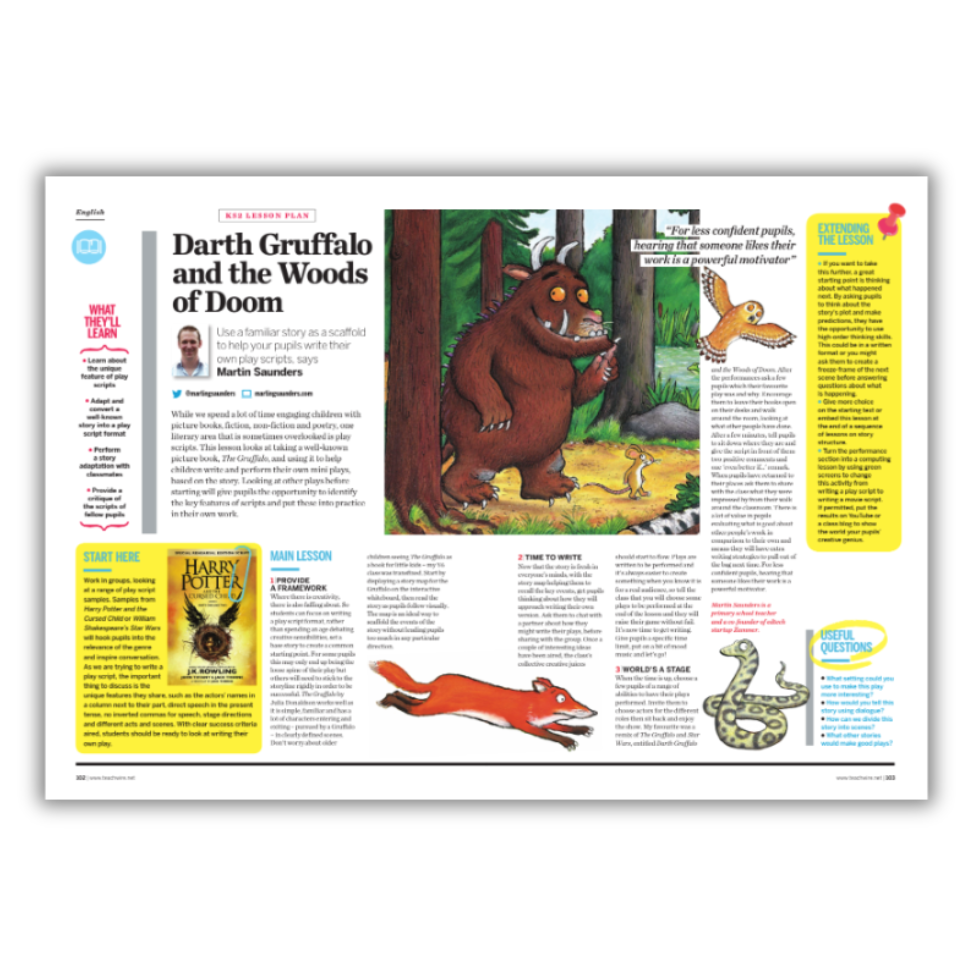Use a familiar story as a scaffold to help your pupils write their own play scripts with this KS2 lesson plan all about the features of a play script…
We spend a lot of time engaging children with picture books, fiction, non-fiction and poetry. However, one literary area that is sometimes overlooked is play scripts.
This lesson looks at taking a well-known picture book, The Gruffalo, and using it to help children write and perform their own mini plays, based on the story.
Looking at other plays before starting will give pupils the opportunity to identify the key features of scripts and put these into practice in their own work.
Features of a play script KS2 learning objectives
- Learn about the unique feature of play scripts
- Adapt and convert a well-known story into a play script format
- Perform a story adaptation with classmates
- Provide a critique of the scripts of fellow pupils
Starter activity
Work in groups, looking at a range of play script samples. Samples from Harry Potter and the Cursed Child or William Shakespeare’s Star Wars will hook pupils into the relevance of the genre and inspire conversation.
As we are trying to write a play script, the important thing to discuss is the unique features they share, such as:
- actors’ names in a column next to their part
- direct speech in the present tense
- no inverted commas for speech
- stage directions
- different acts and scenes
With clear success criteria aired, students should be ready to look at writing their own play.
Martin Saunders is a primary school teacher and a co-founder of edtech startup Zammer.











